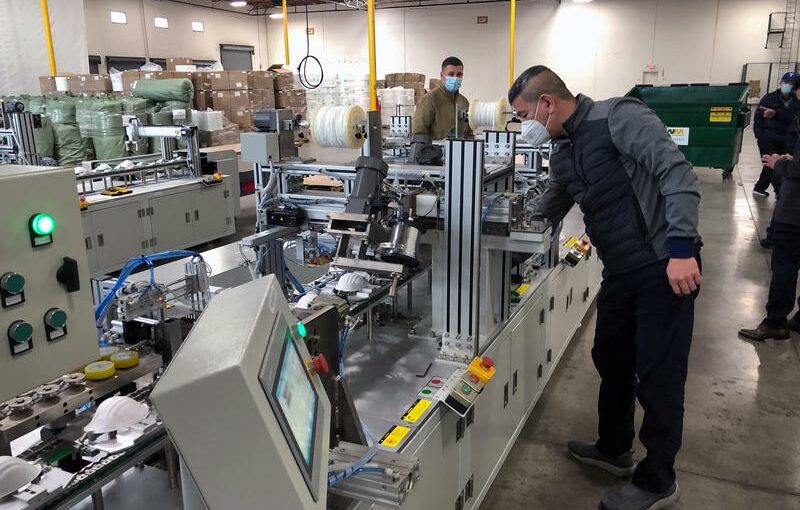WASHINGTON (Reuters) – U.S. manufacturing activity grew at a moderate pace in June, but employment contracted for the first time in seven months, likely because of rampant shortages of raw materials and labor.
The Institute for Supply Management (ISM) said on Thursday its index of national factory activity slipped to 60.6 last month, the lowest reading since January, from 61.2 in May.
A reading above 50 indicates expansion in manufacturing, which accounts for 11.9% of the U.S. economy. Economists polled by Reuters had forecast the index dipping to 61.0 in June.
Massive fiscal stimulus boosted demand for long-lasting manufactured goods during the COVID-19 pandemic, with millions of Americans working from home and learning remotely. Factories are struggling to keep up as the pandemic fractured supply chains and disrupted the global shipping industry.
A global shortage of semiconductors is undercutting production of motor vehicles, electronics and household appliances. The scarcity of raw materials is driving up costs for both manufacturers and consumers, contributing to an acceleration in inflation in recent months.
Though higher inflation is generally viewed as transitory, Americans should expect to pay more for goods and services until the demand-supply imbalance eases. Economists at Goldman Sachs believe supply will start catching up later this year, but caution it could take until at least mid-2022 to fully restore motor vehicle inventories.
The ISM survey’s measure of prices paid by manufacturers jumped to a record 92.1 last month from a reading of 88.0 in May. Consumer prices have been surging, with the Federal Reserve’s main annual inflation measure rising by the most in 29 years in May.
Demand is also being fueled by the reopening of the economy, with more than 150 million Americans fully vaccinated.
The survey’s forward-looking new orders sub-index edged down to a reading of 66.0 last month from 67.0 in May. Inventories at factories remain low and business warehouses are almost empty. A pickup in production allowed factories to work through some of the backlog of uncompleted work.
A measure of factory employment contracted for the first time since November.
Labor is scarce even as 9.3 million people are officially unemployed. Generous unemployment benefits funded by the government, problems with child care and fears of contracting the virus have been blamed for keeping workers home.
There have also been pandemic-related retirements as well as transitions to new careers. The slowdown in hiring at factories last month was highlighted in the June ADP National Employment Report published on Wednesday.
The government’s closely watched employment report on Friday is likely to show that nonfarm payrolls increased by 700,000 jobs in June after rising 559,000 in May, according to a Reuters survey of economists.
Source: Read Full Article
